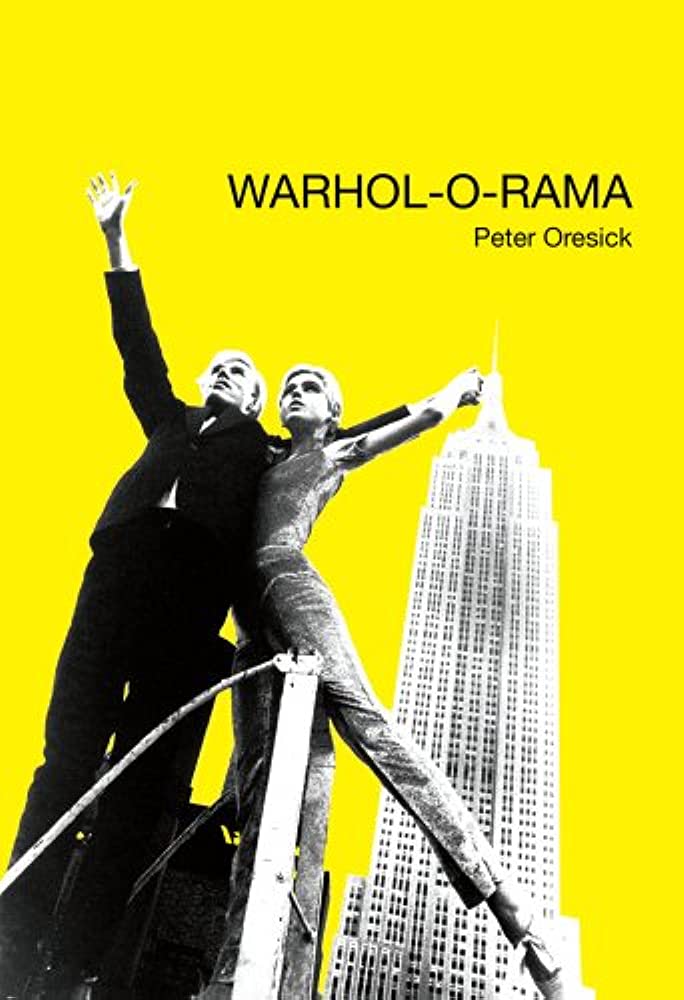Don’t think about making art, just get it done. Let everyone else decide if it’s good or bad, whether they love it or hate it. While they are deciding, make even more art.
― Andy Warhol
Back to the Reviews page.
Warhol-o-rama
Andy Warhol As Seen Through Poetic Words
Warhol-o-rama by Peter Oresick is creative, insightful, culture-grabbing and well-written.
As poetry, it lacks. I am deciding to not consider it poetry, though, in the classic sense. Why? Andy Warhol was not an artist in the classic sense. Judging it, comparing it against the established canon of great literature would be unfair, and likely not Oresick’s intention.
Oresick takes and applies poetically aspects of Warhol’s imagined life — both the life we saw through his public appearances and the life we saw through his art, plus all kinds of intriguing curiosities that may have been Warholian.
He did his homework. Relatively young at 55 years old, Oresick could not have known of Warhol in his pop culture heyday. An extra point goes to him for this, as it is clear he broadly examined Warhol’s truth and legend.
What’s Here?
This is difficult to explain. In short, Oresick took Andy Warhol out of the 1960s, and looked at him from the modern generation. Then, he wrote a poem or short creative structure piece about a part of Warhol. When he does it well, he mimics Warhol’s own personality and style while looking him straight in the eye.
Each piece is unique. While sometimes Oresick’s tone and pace is reminiscent of another piece, he, like Warhol, did not limit himself stylistically. Unlike E. E. Cummings, another inventor of poetic structure, he remains in clarity. Readers can understand the subject the first read through. Those who know Warhol’s life and work will see more references and allusions, but there is enough to satisfy the reader new to Warhol.
Thankfully Oresick never relies on one style, or falls into 1960s-speak, or falls into a Beat style. Instead, he gives us Andy Warhol, not Kerouac or Dylan or Ginsberg.
Some are short pithy statements like one titled, “For Andy Warhol Was a Flake among Artists.” The piece is brief: “But an artist among flakes.” Crammed with irony, adulation and insult, there is plenty to chew on, no matter what side of Andy veneration the reader sits.
There is a letter, “Andy Warhol for the Widow of Andy Warhol.” Warhol had a portable recorder he would call his ‘wife’ but was otherwise unmarried. The piece is a formal, stock letter from the New York Hospital asking his widow to pick up personal effects — which is a ditto machine and aniline purple pigment. The line structure is poetry even though the text is prosaic.
There’s a parody, “Andy Warhol for Carpatho-Rusyns: A Polka,” written to the tune of a Weird Al Yankovic song. It describes Warhol as bohemian and flamboyantly gay, themes Oresick explores heavily.
The dependence on a caricature of Warhol, as opposed to looking at his deeper artistic impact is a weakness in the book. There is more than this, but the balance occasionally leans too close to the surface, and not enough toward the art. Still, given Warhol’s own self-promotive persona, he himself might be smiling, having achieved this once again postmortem.
In all, it is a dependable collection. Art students looking for a primer on Warhol’s cultural impact can peruse this and gain a taste of what things were about. Non-artist writers like me, those of us who have seen Warhol’s work with amusement, can get a better appreciation of what was going on. Warhol fans will delve happily into this, bathing in the statements and laughter of an unusual era in American art.
I fully recommend “Warhol-o-rama” by Peter Oresick.
Subscribe for Leap Updates
Newsletter may include updates from Tree Fort Books, American Speechwriter, Joro Spider Appreciation, and other Trendl Communications projects. No spamming and always interesting.
Copyright (c) 2025 Anthony Trendl. All rights reserved. Sponsor: AmericanSpeechwriter.com.
As an Amazon Associate, we may earn commissions from qualifying purchases from Amazon.com.
